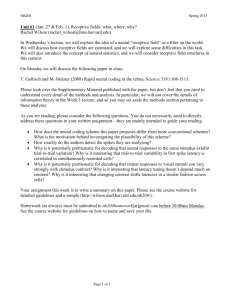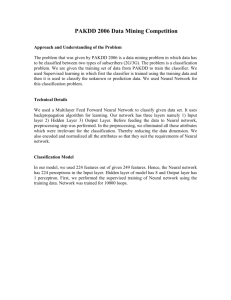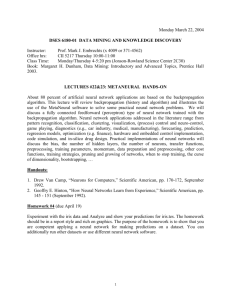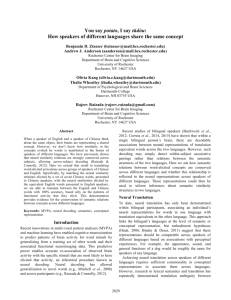Mini-syllabus
advertisement
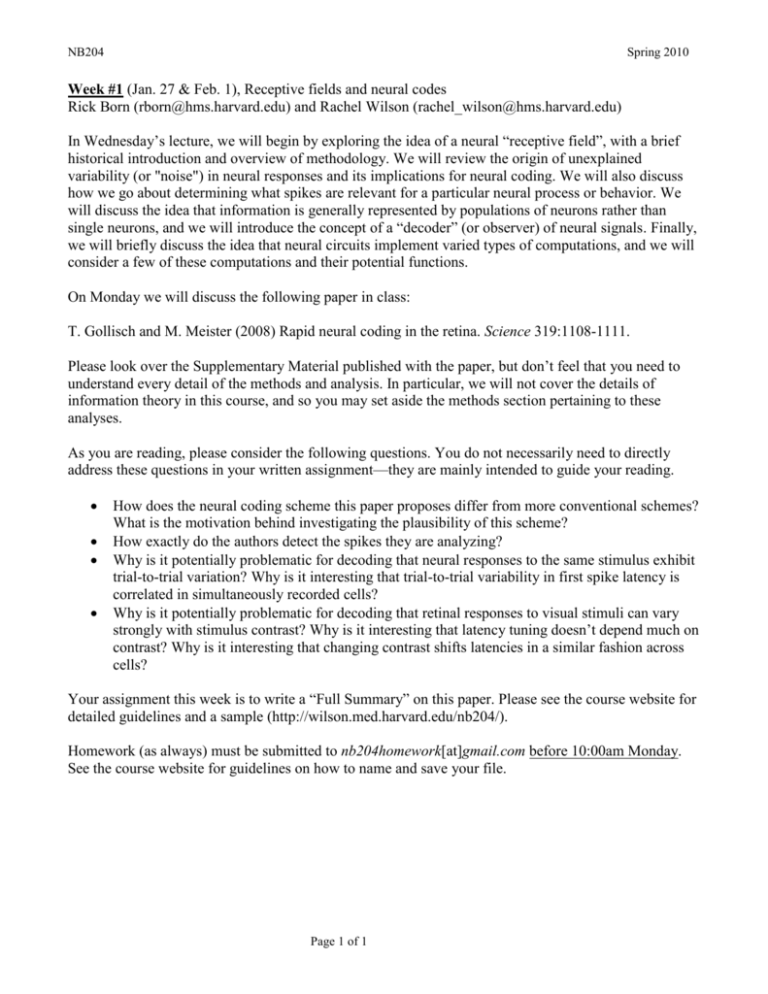
NB204 Spring 2010 Week #1 (Jan. 27 & Feb. 1), Receptive fields and neural codes Rick Born (rborn@hms.harvard.edu) and Rachel Wilson (rachel_wilson@hms.harvard.edu) In Wednesday’s lecture, we will begin by exploring the idea of a neural “receptive field”, with a brief historical introduction and overview of methodology. We will review the origin of unexplained variability (or "noise") in neural responses and its implications for neural coding. We will also discuss how we go about determining what spikes are relevant for a particular neural process or behavior. We will discuss the idea that information is generally represented by populations of neurons rather than single neurons, and we will introduce the concept of a “decoder” (or observer) of neural signals. Finally, we will briefly discuss the idea that neural circuits implement varied types of computations, and we will consider a few of these computations and their potential functions. On Monday we will discuss the following paper in class: T. Gollisch and M. Meister (2008) Rapid neural coding in the retina. Science 319:1108-1111. Please look over the Supplementary Material published with the paper, but don’t feel that you need to understand every detail of the methods and analysis. In particular, we will not cover the details of information theory in this course, and so you may set aside the methods section pertaining to these analyses. As you are reading, please consider the following questions. You do not necessarily need to directly address these questions in your written assignment—they are mainly intended to guide your reading. How does the neural coding scheme this paper proposes differ from more conventional schemes? What is the motivation behind investigating the plausibility of this scheme? How exactly do the authors detect the spikes they are analyzing? Why is it potentially problematic for decoding that neural responses to the same stimulus exhibit trial-to-trial variation? Why is it interesting that trial-to-trial variability in first spike latency is correlated in simultaneously recorded cells? Why is it potentially problematic for decoding that retinal responses to visual stimuli can vary strongly with stimulus contrast? Why is it interesting that latency tuning doesn’t depend much on contrast? Why is it interesting that changing contrast shifts latencies in a similar fashion across cells? Your assignment this week is to write a “Full Summary” on this paper. Please see the course website for detailed guidelines and a sample (http://wilson.med.harvard.edu/nb204/). Homework (as always) must be submitted to nb204homework[at]gmail.com before 10:00am Monday. See the course website for guidelines on how to name and save your file. Page 1 of 1
